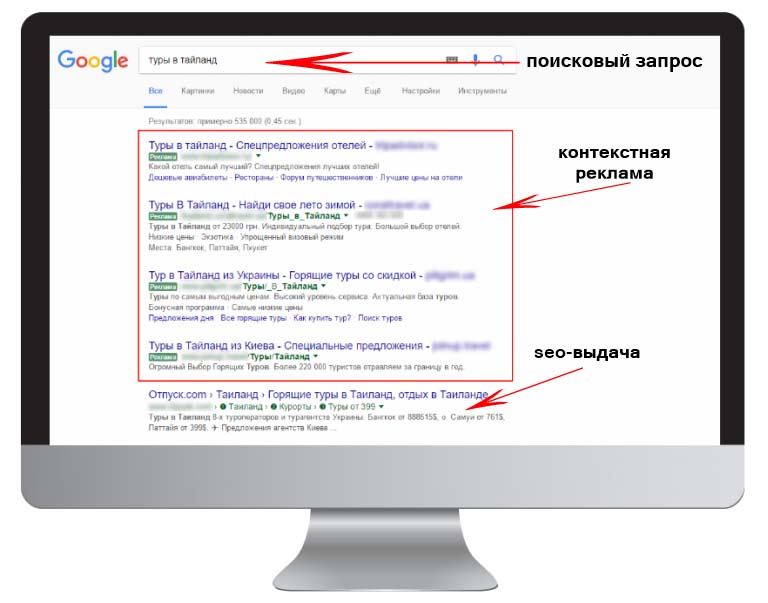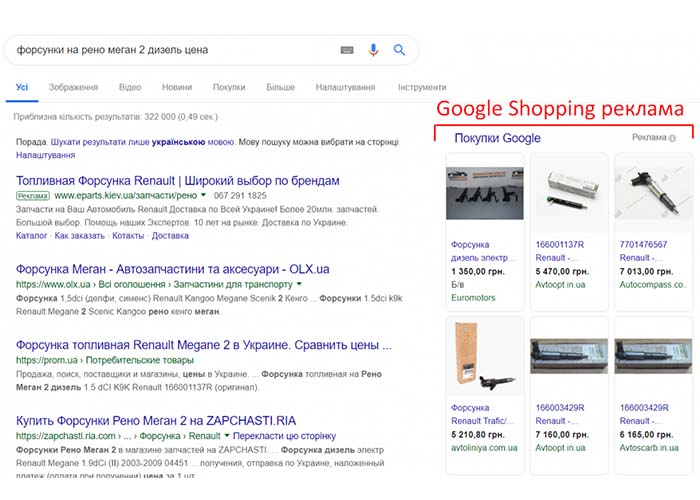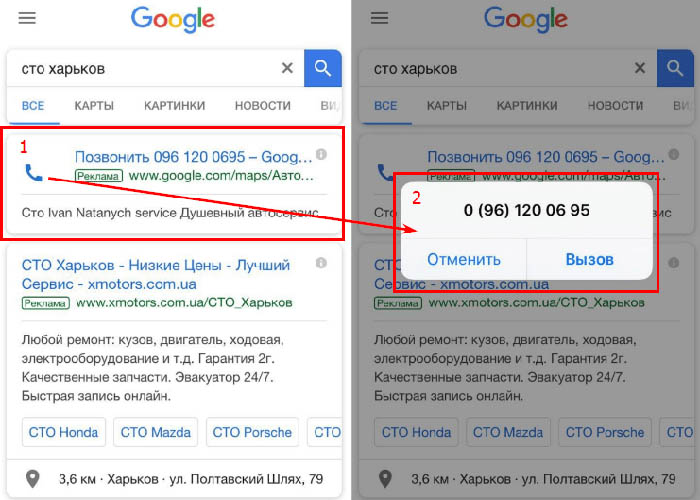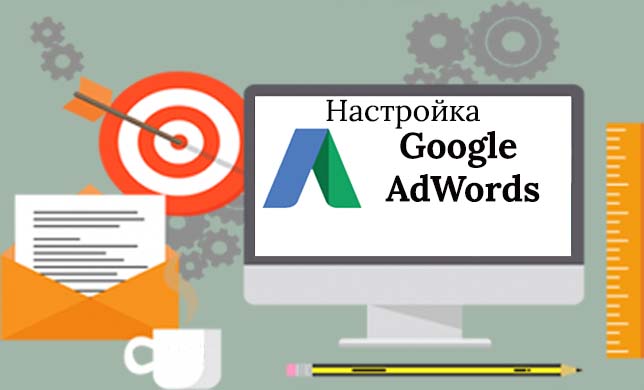Google Search Ads
Every day, the Google search engine processes a whopping 3.5 billion queries from all over the world. People are looking for answers to their questions, the best products and services. And it is at this moment, when the user is in an active search, that your business has a unique opportunity to announce your offer, using contextual advertising in search.
Search advertising is highly effective, because it is as accurate as possible corresponds to the requests and needs of the user. For example, a person who enters the query “pizza delivery near me” is very likely to click on a relevant advertisement of a pizzeria. It is for such clicks from the target audience and charged in search advertising.
How many calls and sales will I get by ordering contextual advertising from you?
I need to calculate the conversion of my website
Describe
the task
in the application
Calculate potential ad revenue
Google
contextual advertising calculator
What is search engine advertising for websites?

Search advertising is an effective digital marketing tool that allows advertisers to display their ads directly in search results when a user enters a relevant query. This makes it possible to attract the most interested audience to their website.
These ads are usually placed at the top and bottom of the search results page. They are visually slightly different from the organic output and are labeled as “advertising”, but they are well integrated into the overall interface and do not cause users rejection. By the way, due to the relevance of search ads, many people often click on ads instead of organics, getting a quick response to their query.
Imagine that you own an online store of sporting goods. A potential customer enters the query “buy running shoes” into Google. And right above the organic output he sees your ad with the headline “Running shoes with delivery in 1 day”. With a high probability the user will click on the ad and will be on your site, ready to buy.
This is the main advantage of search advertising for the site. The advertiser can very accurately target ads with keywords that match the queries of the CA. If we return to our example, you can show ads for commercial queries “buy running shoes” or “order running shoes”, which will ensure high conversion to purchase.
The main advantages of Google search advertising

- Quick start and instant results. Unlike SEO-promotion, which can take months to reach the top, search advertising allows you to be on the top positions of the output literally on the day of launching the campaign. This is especially true if you are promoting trending products, the demand for which can quickly fade. By running search advertising in Google, you will immediately begin to receive targeted traffic to your site.
- Working with a “warm” audience. Search ads are shown only to users who are already actively looking for your products or services. Unlike ads in social networks, where people just spend time, in search ads they are in the active phase of making a purchase decision. You get the most targeted and interested traffic, which increases the chances of conversion.
- Unobtrusiveness. Search ads don’t annoy users because they are relevant to their queries and fit seamlessly into the search results. You don’t distract people, you just give them a way to quickly find what they’re looking for. This builds trust in your brand.
- Incentivizes action. According to research, 29% of users are willing to go straight to an advertiser’s site from a search ad and take a targeted action. Use appeals like “Buy now”, “Make an appointment”, etc. in your ads to encourage people to convert.
- Extensive targeting options. Google Ads allows you to customize displays based not only on keywords, but also on demographics, geography, language, and user devices. This helps you target your audience precisely and avoid wasting your budget.
- Detailed analytics. Advertising Cabinet provides comprehensive statistics on all key metrics – clicks, impressions, CTR, conversions, price per click, etc. You can see which campaigns, ads, keywords bring results, and which ones it’s time to optimize. Use this data to improve the effectiveness of advertising.
- Pay for results. In search advertising you pay for clicks, not for impressions. That is, money is deducted from your advertising account only when the user actually clicks on the ad on your site. This allows you to effectively spend your budget and get the maximum return on every spent hryvnia.
Are there any disadvantages to search engine advertising?
Despite the obvious advantages of search advertising, it has some peculiarities:
- It is only suitable for established demand. Google search advertising is only suitable for products and services for which there is already a demand. If your product is not on the market yet, or only a small number of users are looking for it, you are better off using other advertising tools.
- Expensive clicks. Due to high competition, a click to the site from the search engine is much more expensive for the advertiser than for media or product ads. At the same time, the more popular the niche, the more competition there is for the user – the more expensive it is to pay per click.
- Effective customization requires experience and knowledge. Setting up search advertising without relevant experience carries a huge risk of draining the budget. Thus, a novice advertiser will get a lot of clicks on untargeted search queries, which creates an illusion of ineffectiveness of such advertising for beginners.
- High competition. In popular topics, dozens or even hundreds of companies compete for a place in the advertising rendition. To be in the top, it is not enough just to launch a campaign – you need to work thoroughly on the quality of your account and ads.
When to use Google search advertising?
Google search advertising is versatile and can engage customers at all stages of the sales funnel:
- To generate interest. Search engine advertising is perfect for satisfying the intent of users who are already ready to buy a product or order a service. As a rule, they enter commercial search queries in the search. This allows you to work with an already “hot” audience that is at the lower stages of the marketing funnel. Conversion to sale for such users will be maximized.
- For the emerging demand. Users who have not yet decided to buy, but show interest in the topic in general, can be lured to the site by informational keywords. So, a potential buyer can search for “log homes” to read general information about them. And if the information on your site can attract him, perhaps he will order to build such a house in a future season.
- Comparison of alternatives. At this stage of the sales funnel, the customer has already decided to order a product or service, but has not decided which brand to choose. The advertiser’s task at this stage is to capture the user’s attention and grab it from competitors. Some advertisers even use queries with competitors’ brand names for this purpose to get their traffic for themselves.
Search advertising formats from Google
Google search advertising provides several ad formats, each of which is suitable for solving specific problems. A competent combination of different types of search advertising allows you to reach the entire target audience of a business and maintain conversion at the highest level.

The most common and universal advertising format in Google search results. The ad consists of a title (up to 30 characters), a description line (up to 80 characters) and a link to the site. Typically, text ads appear above or below organic results. Text advertising provides the highest possible CTR due to its similarity to natural search results, as well as relevance, because it corresponds to the meaning of the search query.

The keyword from the search query is automatically inserted into the text of such advertisements. This increases the relevance of advertising, because it ensures that the ad exactly matches the request and provides a personalized offer for each user. DSA are most effective for sites with a wide range of products (large online stores), where it is not possible to create a separate ad for each product.

Show a potential buyer a photo, price and brief description of a specific product directly in the search results. Such ads are usually shown when entering commercial queries, for example, “buy a washing machine.” Shopping ads provide high conversion rates, because the user immediately sees the price of the product without even opening the site. This format is suitable exclusively for online stores.

Using this format allows you to show the user the company’s phone number, which can be used to immediately call the manager when surfing the web from a mobile device. The call can be made either by phone or via Skype, Viber or another convenient messenger. Such ads reduce the number of clicks that a customer needs to make in order to complete an order, which has a positive effect on the conversion rate.
How does setting up a search advertising service work?

In order to customize search advertising was as effective as possible, the specialists of our company use the following algorithm of actions:
- Analysis of the business and the main competitors. We study the specifics of the business, its competitive advantages, target audience, competitors’ activities, determine together with the customer the advantages and weaknesses of the brand;
- Development of placement strategy. Determine the goals for the advertising campaign, as well as the indicators by which the result of its implementation will be evaluated;
- Create advertising campaigns. To create PPC-advertising you need to do the following:
- Define semantic core – a set of keywords and minus-words, choose the most relevant pages for all groups of queries;
- Add unique UTM tags to all links (to track the source of the order in analytics systems);
- For each ad or group of ads we set up bids, determine the budget, and all the necessary parameters of displays (time, frequency, etc.);
- We develop a separate strategy for attracting mobile traffic users;
- Analyze behavioral factors on pages.
- Optimization of advertising. At this stage, the achievement of the indicators defined earlier is analyzed. For this purpose, the semantic core is analyzed (irrelevant keywords are replaced with other words), conversion rates and, if necessary, targeting is adjusted;
- Campaign analysis. Using GoogleAnalytics service we collect analytics about the effectiveness of the advertising campaign (number of requests, effectiveness of landing pages, ROI of advertising) and on the basis of the obtained data we implement changes to obtain higher target indicators.
How is search advertising different from media advertising?
Google search ads have significant differences when compared to media ads:
- Campaign objective. While search advertising is aimed at increasing the number of orders or targeted actions, ads in the contextual media network are more likely to help raise the company’s visibility or inform the audience about a new product.
- Placement locations. Search advertising allows you to display ads only on Google’s site, while media ads can be displayed in the partner network, YouTube, Gmail and other sites.
- Clickability. The ratio of clicks to ad impressions is usually significantly higher for search ads. For example, for search it is typically between 3 and 11 percent, while for media campaigns it is no more than 2 percent.
- User perception. He sees search ads as an answer to his question or a recommendation, while a banner ad is perceived as a more intrusive advertising tool – hence the lower CTR.
- Different stages of the product life cycle. Banners in networks can be used starting from the launch of a new product on the market to familiarize the audience with it and then to maintain interest in it with their help. But search engine advertising is suitable only for products with established demand.

